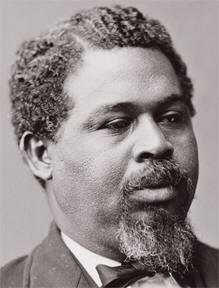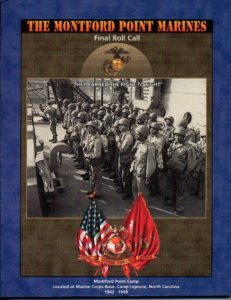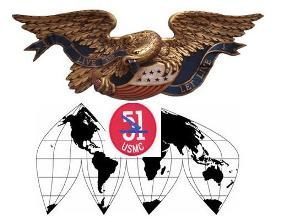Black Marines on the U.S.S. BLADEN
Combat on Iwo Jima
USS Bladen (APA-63) was a Gilliam-class attack transport that served with the US Navy during World War II. The USS Bladen was boarded by African-American Marines and departed the west coast for Pearl Harbor 20 November 1944 and upon arrival embarked personnel of the 103rd and 109th Construction Battalions for Guam. On 27 January the USS Bladen set sail for Iwo Jima, via Saipan. The attack transport debarked troops and provided logistic support during the assault and occupation of Iwo Jima (19–28 February, 1945).
Combat in Okinawa
After a brief layover at Saipan, Bladen prepared for the invasion of Okinawa. She performed her logistic services during the initial strikes against, and occupation of, Okinawa (1–10 April).
The largest number of black Marines to serve in combat took part in the seizure of Okinawa in the Ryukyu Islands, the last Japanese bastion to fall before the atomic bomb and the threat of invasion of the home islands combined to bring the war to an end. Three ammunition companies, the 1st, 3d, and 12th, and four depot companies, the 5th, 18th, 37th, and 38th, of the 7th Field Depot arrived at Okinawa on D-Day, 1 April I945. Later in the month, the 20th Marine Depot Company came in from Saipan and in May the 9th and 10th Companies arrived from Guadalcanal and the 19th from Saipan.
The black Marines on the attack transport USS BLADEN (APA-63), the 1st and 3d Ammunition Companies, the 5th Depot Company, and part of the 38th Depot, and those on the USS BERRIEN (APA-62), the rest of the 38th and part of the 37th Depot, took part in the 2d Marine Division demonstration landing off the southeast coast of Okinawa. At the same time the assault troops of the Tenth Army (III Amphibious Corps and the Army’s XXIV Corps) went ashore on the western coast at the narrow waist of the 60-mile-long island. In the feint attack, the men climbed into landing craft, rendezvoused, formed assault waves, and roared in toward the beach, turning around 500 yards from the shoreline. The next day this maneuver was repeated in hope that it would prevent the Japanese commander from moving troops north to oppose the actual landings.
On 3 April, most of the black Marines landed on the island, ready to support the 1st and 6th Marine Divisions, the assault troops of the III Corps. The Japanese had concentrated their defenses on the south, but there was more than enough action in the north to keep everyone in III Corps busy before the two Marine divisions moved south to join the main battle. Japanese air raids were frequent, mostly aimed at the cluster of ships offshore, and the barrier of antiaircraft fire thrown up loosed a deadly shower of shell fragments that often fell on the troops near the beaches. One Montford Point Marine by the name of Albert Hunter (Detroit, MI) recounts his experience aboard the USS Bladen which suddenly came under attack by Japanese airplanes. Immediately, he jumped upon the anti-aircraft gunner torrents and began firing upon the Japanese nearly scoring a direct hit on one of the Japanese planes. Many of the casualties suffered by the black units occurred in April, when their camps and work areas were still relatively near the front lines. The 5th Marine Depot Company had Three Marines of the 34th Depot Company on the beach at Iwo Jima, (l to r) PFCs Willie J. Kanady, Eugene F. Hill, and Joe Alexander.
The Civil War – Montford Point Connection



Robert Smalls (Civil War Hero) Dr. Herman Smalls Rhett-Final Roll Call
Former Past President of the Montford Point Association, Dr. Herman Smalls Rhett is author of the book entitled Final Roll Call which chronicles some of the stories of Montford Point Marines and includes platoon photos, and pictures of the Montford Point Marines matriculated through recruit training at the segregated Camp Montford Point at Camp Lejuene, N.C. during WWII. In the second and final edition of Final Roll Call, Robert Middleton, President of the Montford Point Marines in Detroit, Michigan collaborated with Dr. Rhett in contributing photos of more than a dozen WWII Montford Pointers who missed being included in the previous edition.
Dr. Herman Smalls Rhett (deceased in 2014) was a native of Charleston, South Carolina. According to the Executive Director of the Charleston S.C. Historic Society informed Dr. Rhett that he was a direct descendant of Civil War hero Robert Smalls, also from Charleston, S.C. Robert Smalls became a Naval hero of the Civil War for the Union in the American Civil War (1861-1865) He was forced into the Confederate Navy at the outbreak of the war, and made to serve as wheelman aboard the armed frigate “Planter.” On May 13, 1862, he and 12 other slaves seized control of the ship in Charleston harbor and succeeded in turning it over to a Union naval squadron blockading the city. This exploit brought Smalls great fame throughout the North. He continued to serve as a pilot on the “Planter” and became the ship’s captain in 1863.
After the war, Smalls rose rapidly in politics, despite his limited education. From 1868 to 1870 he served in the South Carolina House of Representatives and from 1871 to 1874 in the state senate. He was elected to the U.S. Congress (1875-79, 1881-87), where his outstanding political action was support of a bill that would have required equal accommodations for both races on interstate conveyances. After the Compromise of 1877, and as a part of white efforts to silence African American political power and rights, Smalls was wrongfully charged and convicted of taking a 5,000 bribe five years earlier in connection with the awarding of a printing contract. He was pardoned as part of a deal in which charges were also dropped against Democrats accused of election fraud. In 1895 he delivered a moving speech before the South Carolina constitutional convention in a gallant but futile attempt to prevent the virtual disenfranchisement of Blacks. A political moderate, Smalls spent his last years in Beaufort, where he served as port collector (1889-93, 1897-1913); he died on Feb. 22, 1915.
